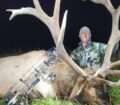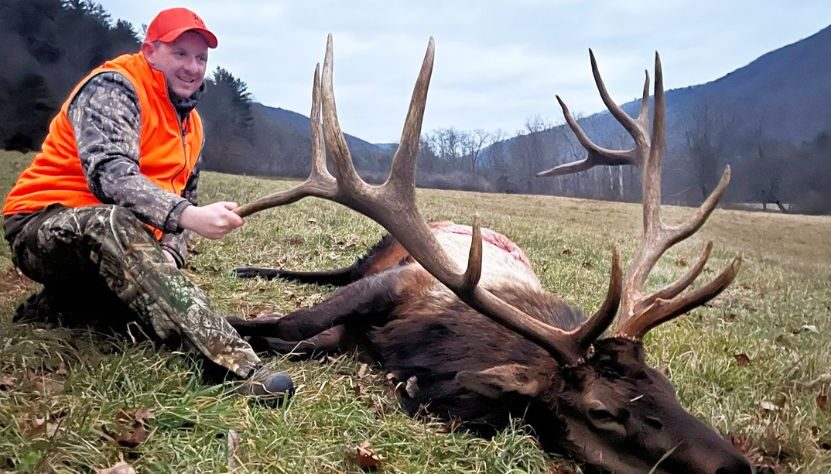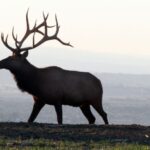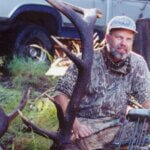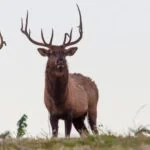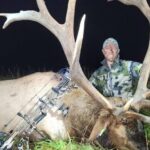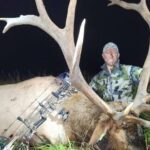Editor’s Note: Elk County Outfitters, 717-439-5795, [email protected] and https://www.facebook.com/elkcountyoutfitters/ is located in north-central Pennsylvania near Caledonia in what’s known as the Pennsylvania elk range. The company, headed-up by Brian Hale, provides guided hunts for the lucky people who win elk tags in the State of Pennsylvania. In the 2022-2023 season, 178 elk tags were available for the entire state, including bull and cow tags. Pennsylvania has three seasons for elk hunting – archery, general and late. In the 2021-2022 season, Elk Country Outfitters guided a total of 36 elk hunters combined between all three seasons.

What’s the Terrain Like When Hunting Elk in Pennsylvania? Hale reports that the state is predominately a deciduous forest, made up of trees like oak, maples and birch. “There are areas of steep hills and mountainsides in the elk range, but they aren’t as high as in the West. Elevation is generally 1200-1800 feet. We have also reclaimed some strip mines – generally mountainsides where dirt has been removed to get to seams of coal. They have been replanted with grass, shrubbery and small trees.”
Hale explains that they hunt quite a few food plots as well that are planted and sustained by the Pennsylvania Game Commission and the Department of Conservation and Natural Resources (DCNR). “They can be anywhere from 4-40 acres. A lot of the state’s power line rights of ways and gas lines are maintained and planted for the elk and primarily are made up of native grasses. Some of the green fields have clover and turnips planted as well.”
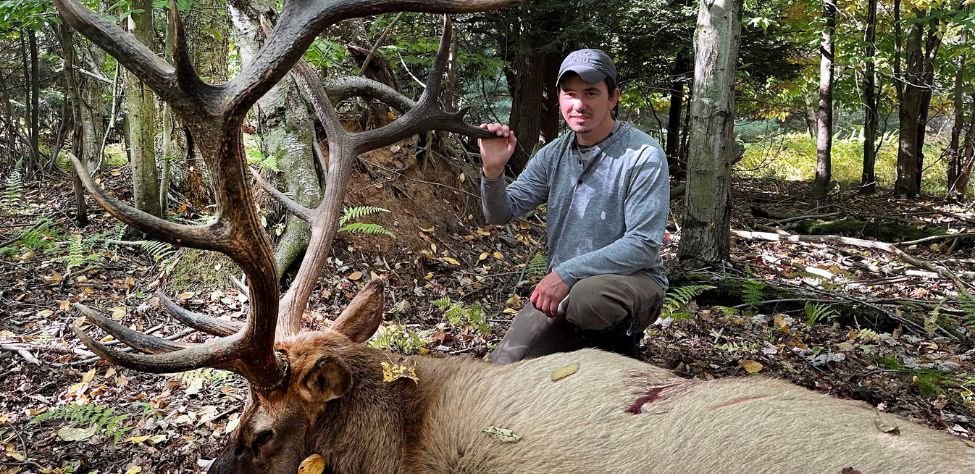
During the archery season (early September), the elk are in the rut, and the guides and independent hunters will try to call in the elk. In the general season, the bulls are usually out of the rut. Instead of chasing cows, they mainly want to focus on eating to recover from the rut. Hale reports that this time is when they hunt the green fields and openings to see what bulls and cows may be out and feeding. He says, “Nine times out of 10, when you see an elk then, he will be feeding.”
Elk are very predictable in the last two seasons. They usually will bed close to where they are feeding. “And,” according to Hale, “we generally won’t pursue them into the woods because they often can see us before we spot them. We will also do very-little calling, unless we get a cow call to stop a bull that may be walking or running, allowing our hunter to get a shot. In the late season, the hunters can use rifles, black powder or archery to try and take the elk.”
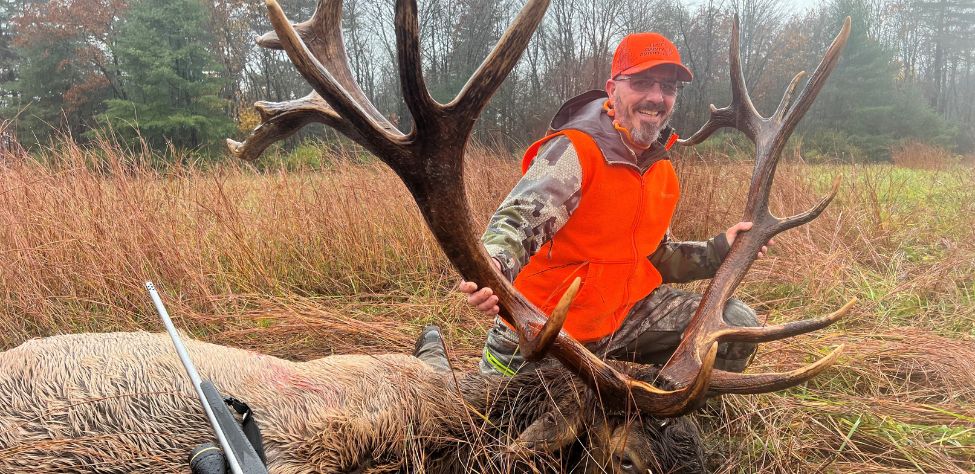
What’s the Average Size of Bull Taken in Each Elk Season? In almost every area of the state, a hunter who draws a bull tag should have a legitimate chance to take a bull that is 330 or better. But as Hale mentions, “Also some hunters may say, ‘I am shooting the first bull I see.’ That is fine with me – taking a young bull. Then, some of our hunters say, ‘I would rather wait for a trophy-sized bull, even if I have to go home after the season with my tag in my pocket.’
“Because we have a very-limited number of elk tags, we have a good age structure in our elk herds. We never tell our hunters what size bull to take. However, we will tell them, ‘I think we can find a bull that is a little bigger than the one you are looking at.’ Generally, we’ll talk to them in camp and ask what size bull they are willing to take. Then we will say that we may want to hunt the bigger bulls in the first few days. If we aren’t seeing them, then we may lower our expectations and try to take a bull in the 330s or 340s.
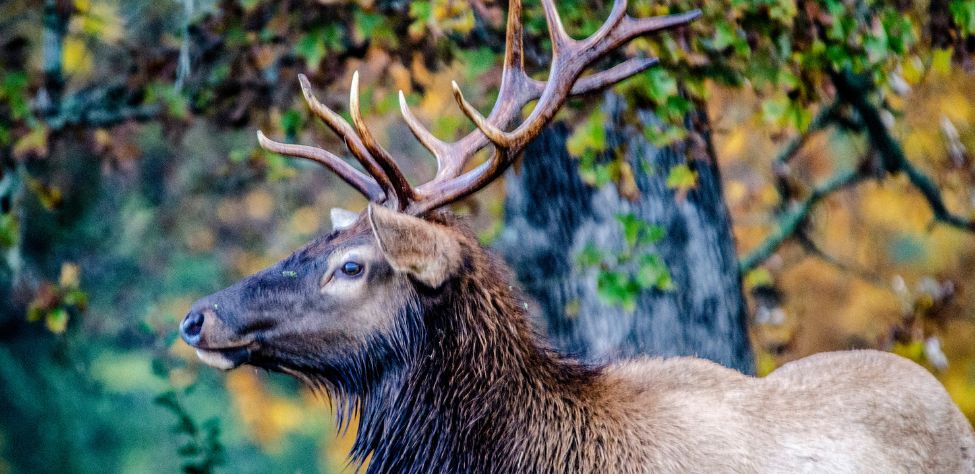
“I remember a few years ago when we had an older hunter, and within the first few minutes of his hunt, he shot a relatively small and young bull. When the guide and he got back to camp, we wondered why he took a bull that small – although, we didn’t say that. When I asked the older man’s guide why his client shot the little bull, the guide said, ‘This fellow told me that he might not wake up tomorrow morning to hunt another day. God’s giving me a chance to take him; I’m going to take him.’ I realized then that a trophy elk is whatever the hunter thinks or wants their trophy elk to be.”
The largest elk ever taken in Pennsylvania was in 2020 with Elk County Outfitters. This hunter had the KECA tag (Keystone Elk Country Alliance) tag. This tag is kind of the Pennsylvania version of the Rocky Mountain Elk Foundation. Anyone is eligible to buy a KECA ticket for $20 or six for $100. All the raffle tickets go in a drum where they are stirred, and someone draws out one name.

The other special tag is the Governor’s Tag. Whoever bids the highest will receive this tag. In 2021, the highest bid was $275,000. Both tags have special exceptions – the person who takes either tag can start hunting September 1 in any zone with any weapon until the end of the November season.
Drawing a Pennsylvania tag means that you can hunt in one of the 14 designated zones. Zone 1 doesn’t have very-many elk because they move in and out of it to feed on the agriculture. When you hunt in Zone 1 you’re helping the farmers out by taking some of the elk there.
According to Hale, “The largest non-typical elk we have taken was in 2020 when Duane Kramer from Washington State had the KECA tag. He took a bull that net scored 455 inches that ranks #6 in the All Time Hunter Harvested Record Book. Even though it is #6, it is the fourth highest elk ever taken by a hunter. Several elk rank ahead of it, but they were hunter pick-ups. We just took an elk in the 2022 season that may rank higher in the Pennsylvania Record Books. The bull was a main frame 6×6 with two stickers and had a green score of 449-3/8 as a typical 6×6.
Looking for more content? Check out our YouTube channel and watch “Why I Love to Guide Children” by John E. Phillips.
Expert Guidebooks on Elk Hunting: Best Sellers
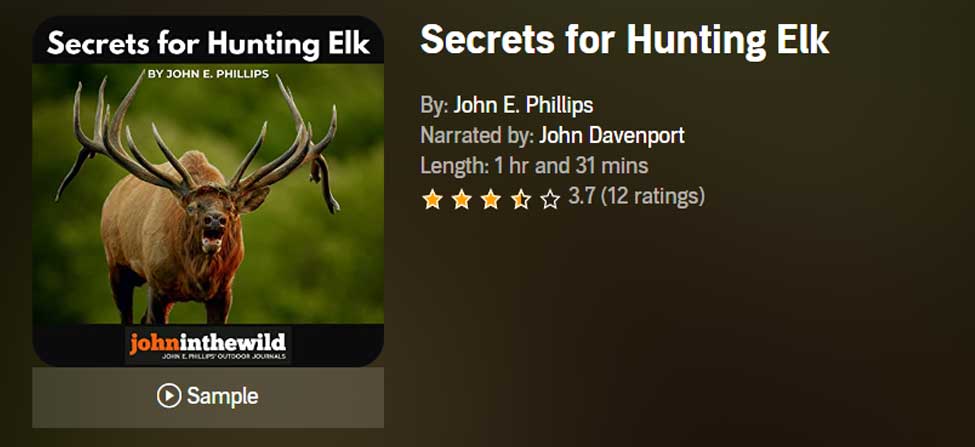
Secrets for Hunting Elk
The quickest, easiest (if there is an easy way), and safest way to find and take that bull elk of a lifetime will be to hunt with a guide.
Chad Schearer, a longtime Montana guide and TV personality, told me, “My hunter is my gun. If I get to the elk, and my hunter isn’t with me, then we don’t take the elk. My job is not only to find the elk but also to help the hunter get to the elk and make the experience as enjoyable as I can for him.” That’s the kind of fella with whom I want to go elk hunting.
An elk hunt can be tough, but it doesn’t have to be so tough that you don’t enjoy it. That’s why this elk hunting book starts with the confessions of an elk guide and with Chad Schearer’s philosophy of what the guide and the hunter’s relationship should be.
A good portion of your success will depend on your physical condition, and Matt Morrett of Harrisburg, Pennsylvania explains how an eastern hunter can get ready physically during June and July to hunt western elk, the animals he describes as, “Like deer or turkeys on steroids.”
Wayne Carlton, well-known elk hunter and TV and video personality from Montrose, Colorado, tells us what types of elk calls to use and what to say to the elk. Mike Miller of Colorado, another elk guide and Mossy Oak video personality, has tactics for the best equipment for bowhunting and gun hunting elk.
You’ll learn helpful strategies and hunting tips in this book, as well as some straightforward hunting methods that will help to make your elk hunt more successful.
“Thanks to the advice in your elk hunting books, I was able to call up a nice 6-point (6X6) bull elk! He was bugling like crazy. I called him in from about a ¼ mile away. Called him into bow range (about 40 yards away). It was a thrill!” ~Rob Brannon
VERSIONS: AUDIBLE & KINDLE
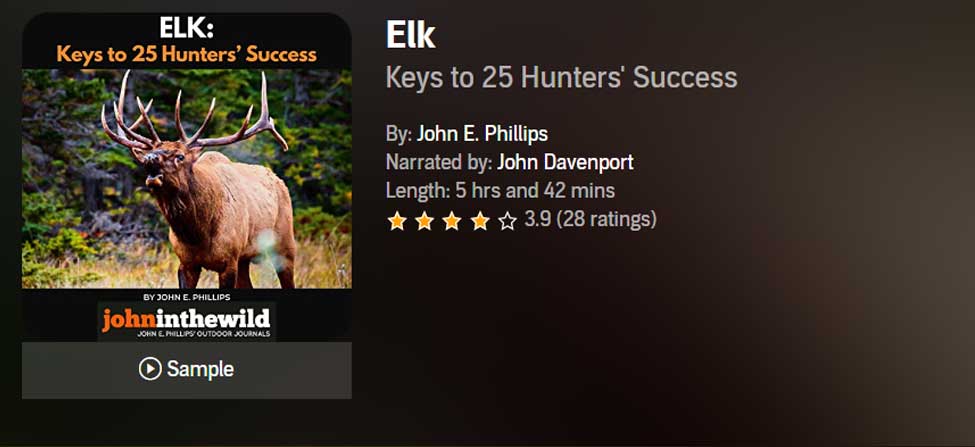
Elk: Keys to 25 Hunters’ Success
Often just one tip or tactic makes the difference in whether you take an elk home to dinner or have to hike back to the truck by yourself. In John E. Phillips’ latest elk book, Elk: Keys to 25 Hunters’ Success, you’ll learn from successful elk hunters the strategies they use to find and take elk.
Many know that the technique that seems to work most often is to hunt where other elk hunters don’t and understand where the elk are before you go on a hunt by studying data from each state, visiting HuntData (see chapter 1), examining maps, and reading postings on elk forums.
This book also tells you how to get ready physically for an elk hunt, including participating in Train to Hunt Competitions, what gear you need to take, how to enjoy a successful do-it-yourself elk hunt, or how to pick the best elk guide for you. You’ll also hear about the X System and the Broken Y System of hunting elk.
Although no one person has all the answers on how to help you find and take your elk, I’m convinced that this book’s outdoors men and women will teach you how to have satisfying elk hunts.
As my friend Karl Badger once told me, “Elk hunting doesn’t get any better than when I ride horses into the high backcountry, see two grizzly bears, hear a pack of wolves howl close to camp all night long, eat plenty of delicious food prepared on a fire and enjoy the company of good friends.”
VERSIONS: AUDIBLE, KINDLE & PRINT
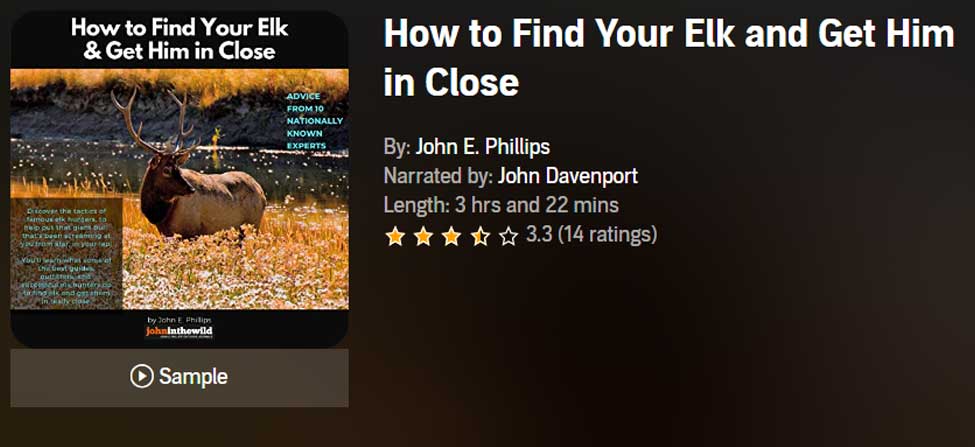
How to Find Your Elk and Get Him in Close will teach you the tactics of 10 nationally known elk hunters, to help put that giant bull that’s been screaming at you from afar, in your lap. You’ll learn what some of the best guides, outfitters, and successful elk hunters do to find elk and get them in really close.
Also in this audiobook, you’ll notice that the majority of the experts call elk to within bow range. We selected numerous bowhunters and bowhunting guides, since the bowhunter has to get much closer to a bull than the gun hunter does – often less than 20 or 30 yards – practically in your lap.
On one elk hunt, I’d heard this bull bugle all morning. My guide had called him within 30 yards, and he was standing just inside black timber. I saw the smoke from his nose wafting out into the icy air less than 30-yards away. All the bull had to do was step out, and I could take the shot with my bow. But then, through no fault of my guide or me, the bull vanished.
The only conclusion I could come up with to understand why the bull I wanted to take with my bow hadn’t stepped out and given me a shot, was because he got raptured. He evidently had left the earth with no trace of himself.
This hunt was when I started wanting to learn more about hunting elk up close. In this book, I’ve tried to find some of the most knowledgeable, experienced, and practical elk hunters. I’ve always found that the best way to learn any outdoor skill, is to either hunt or fish with the best sportsmen in that field.
Often, in elk hunting, that means elk guides, who generally hunt every day of the season and receive a salary for every hunter they guide. So, I’ve put together a group of some of the best elk hunters I know to help us all learn how to find bull elk and get them in close.
VERSIONS: AUDIBLE, KINDLE & PRINT

